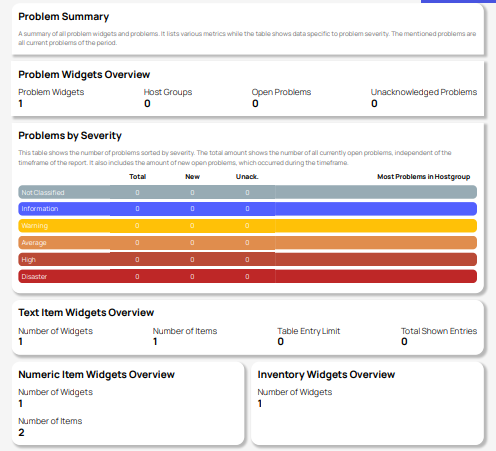Reports
Create highly customizable reports that are periodically generated and sent to all subscribers in various formats, including PDF, JSON, CSV, and XML.
Reporting provides convenient solutions to monitor Zabbix data. With user-configurable reports, data is collected at intervals, processed and made available in various formats. Options include PDF rendering of the report as well as JSON, XML and CSV files.

Reports are based on a variety of widgets. Widgets are the smallest but most important building blocks. They determine which data is processed by the Zabbix server and displayed in the report.
When creating a report, one or more widgets must be configured. Further configuration options are available on the report’s configuration page. These options include determining the data collection and delivery interval (the schedule), along with data limits for certain widgets within the PDF report.
The JSON transformer can be used to manipulate the entire JSON file data structure of a report. As JavaScript is utilized to perform this operation, complex calculations can be performed and the resulting JSON files be used for further processing.
Create highly customizable reports that are periodically generated and sent to all subscribers in various formats, including PDF, JSON, CSV, and XML.
DataForge provides a wide and continually expanding range of widgets that form the structure of reports. These widgets are primarily designed to retrieve specific data from a Zabbix server, with exceptions such as the markdown widget.
The media page allows the creation of DataForge media types. These media types define the report delivery and its destination.
Report subscriptions enable the automated delivery of reports based on the configured schedule, types, and user media.
JSON transformers allow manipulation of reports in JSON format before delivery.